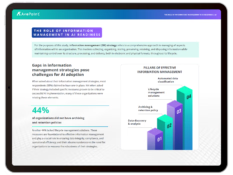Planning for Office 365—Backup and Data Protection Continuity
Be prepared to go toe-to-toe with your migration opponent: Data Loss. Block these common shots with simple best practice steps using Cloud Backup. Watch On-Demand

Event Information
- 30 Minutes
Moving to Office 365 doesn’t happen overnight. Whether it be from an on-premises environment or tenant to tenant, there are so many details to consider to ensure business and collaboration continuity.
For round one, we are focusing on how to approach transitioning your third-party backup tools and strategies to best defend your content from user error, unexpected changes, and the many other ways organisations lose data on their way to Office 365.
There are various ways to counter all these incoming jabs, hooks, and uppercuts with Cloud Backup.
- Block: Platform Backup
Maintain a record of information on-premise before you get backup continuity in the cloud. Or, you can decide to backup your on-prem into an Azure storage location to establish a record of your content ahead of your arrival. Now if anything unexpected happens to your data – such as failures, downtime, and workflows not transferring – You have something to fall back on. - Stamina: Hybrid Support
Do you have an abundance of content requiring a segmented migration plan? If your migration is prolonged, AvePoint Backup will provide hybrid support to ensure both environments are actively being backed up. Your company can have a unilateral or bilateral backup destination, meaning you can choose to retain content in one or two locations. - Jabs: Incremental Backups
Already in Office 365 and just migrating from one tenant to another? Cloud Backup will continue to run incremental backups up to four times a day during the execution.
In addition to backing up the whole of your content, there are also other defenses that are worth strengthening. This includes permission management, maintaining metadata, and mitigating downtime.



